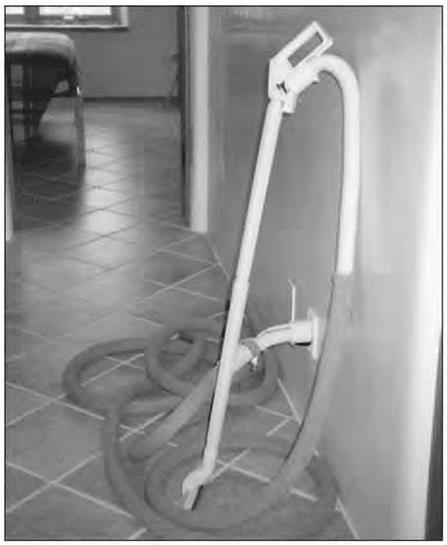Refrigerators and Freezers
There are many styles of refrigeration units available. Self-defrosting models have a drip pan located somewhere under the unit. Some units have drip pans located in the back or mounted internally, where they are inaccessible. When purchasing a unit, make sure the drip pan is easily accessible from the front and has adequate clearance underneath for easy cleaning. The pan should be cleaned monthly to prevent odors or the growth of microorganisms. It is also important to keep the cooling coils clean of dust. Not only will this improve your air quality but it also will save energy because the unit will not have to work as hard to stay cold.
Cook Tops, Ovens, and Ranges
All electric cook tops, ovens, and ranges produce elevated magnetic fields. Surprisingly, it is frequently the built-in electric clock that is the largest source, regardless of whether the equipment is gas or electric. Use a gauss – meter to determine the distance of the field.
The act of cooking generates significant amounts of indoor air pollution through vapors and airborne particulate matter such as grease. In addition, food particles left on burners are incinerated and release combustion byproducts.
Gas-fueled appliances are a significant source of indoor air pollution as they can release carbon monoxide, carbon dioxide, nitrogen dioxide, nitrous oxides, and aldehydes into the air. In Why Your House May Endanger Your Health, Alfred Zamm describes how gas kitchen ranges have been the hidden culprit in many cases of “housewives’ malaise.” According to Zamm, “A gas oven operating at 350°F for one hour, because of the inevitable incomplete combustion, can cause kitchen air pollution, even with an exhaust fan in operation, comparable to a heavy Los Angeles smog. Without the fan, levels of carbon monoxide and nitrogen dioxide can zoom to three or more times that.”4
For chemically sensitive individuals, any combustion appliance may be undesirable and we recommend choosing electric over gas for a range/oven. Many cooks, however, prefer to cook with gas because it allows for better timing and temperature control. Ifyou choose a gas range, the following measures will help reduce the amount of pollution:
• Have flames adjusted to burn correctly. They should burn blue. A yellow flame indicates incomplete combustion and the subsequent production of carbon monoxide.
• Choose an appliance with electronic ignition instead of a pilot light. Any model built in the US after 1991 will be equipped with electronic ignition.
• Follow the guidelines for proper ventilation discussed below.
If your preference is to cook with gas, consider purchasing a gas-fired cook top with an electric oven, since it is not necessary or even desirable from a chef’s standpoint for the oven to be a combustion appliance.
Various smooth cook top surfaces are available, including magnetic induction and halogen units. Because they are much easier to dean than coiled elements, they produce less pollution from the burning of trapped food particles. These units should be tested with a gaussmeter to determine the extent of their magnetic fields while in operation.
Oven cleaning is another source of pollution generated in the kitchen. Continuous – cleaning ovens contain wall coatings that continuously outgas noxious fumes. Self-cleaning ovens produce polynuclear aromatic hydrocarbons, which are a source of air pollution. Most brand-name oven cleaners are toxic. The safest way to clean an oven is with baking soda and elbow grease. Ifbaking soda is poured over the spill shortly after it occurs, the spill can be easily cleaned up after the oven has cooled.
Kitchen Ventilation
Because the kitchen generates significant indoor pollution and moisture, the ventilation of this room should be given special consideration above and beyond general home ventilation. Range hoods must be vented to the outside. There are models available that simply circulate the air through a carbon filter and
|
A central vacuum system is convenient and dust free. Photo: Paula Baker-Laporte. |
back into the room. These do not remove cooking pollution sufficiently, but unfortunately many kitchens come equipped with them because they are inexpensive and do not require a roof penetration.
We recommend the largest range hood available, with variable speed control so that you can adjust speed according to your requirements. Some models come equipped with remote fans, which are quieter. When ventilation fans are in operation, especially at higher speeds, it is important that make-up air be supplied. If a home is not equipped with a whole-house supply system, you should open a window to supply make-up air. If a clean source of air intake is not provided by design, the exhausting of air can create enough negative pressure that air will then be sucked into the house through the path of least resistance.
This path could be through a chimney flue for a furnace or water heater, causing dangerous backdrafting of air many times more polluted than that being replaced.







Leave a reply